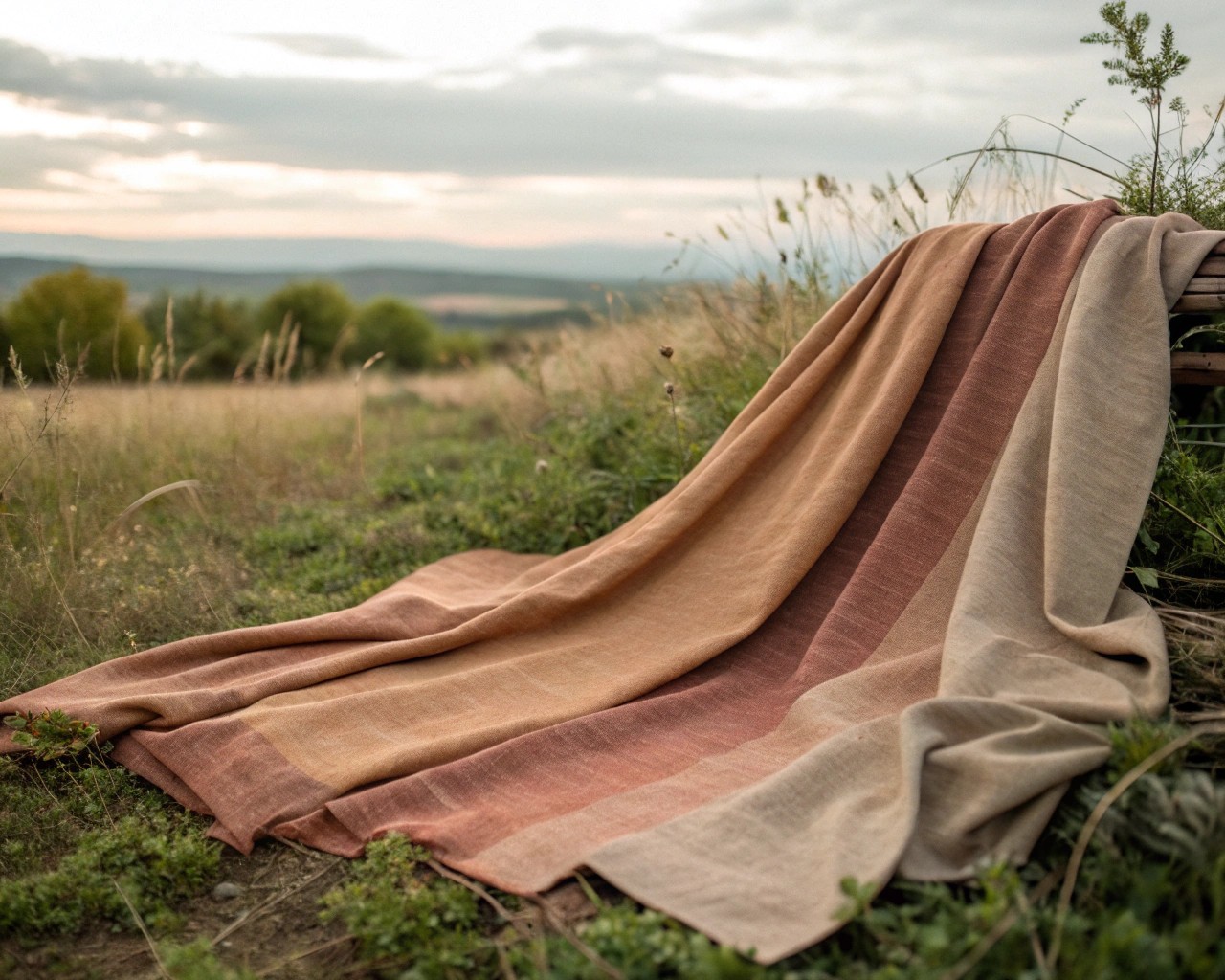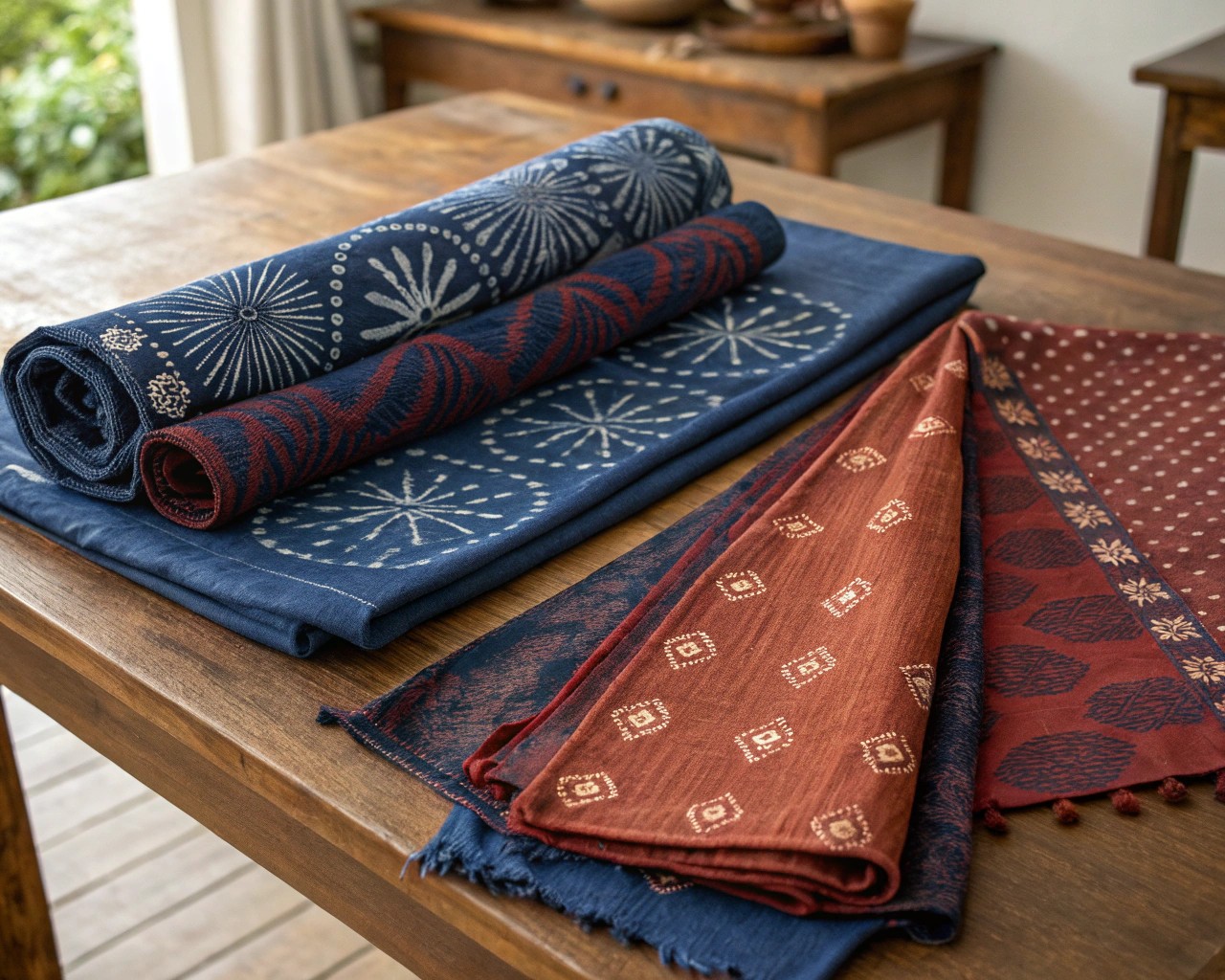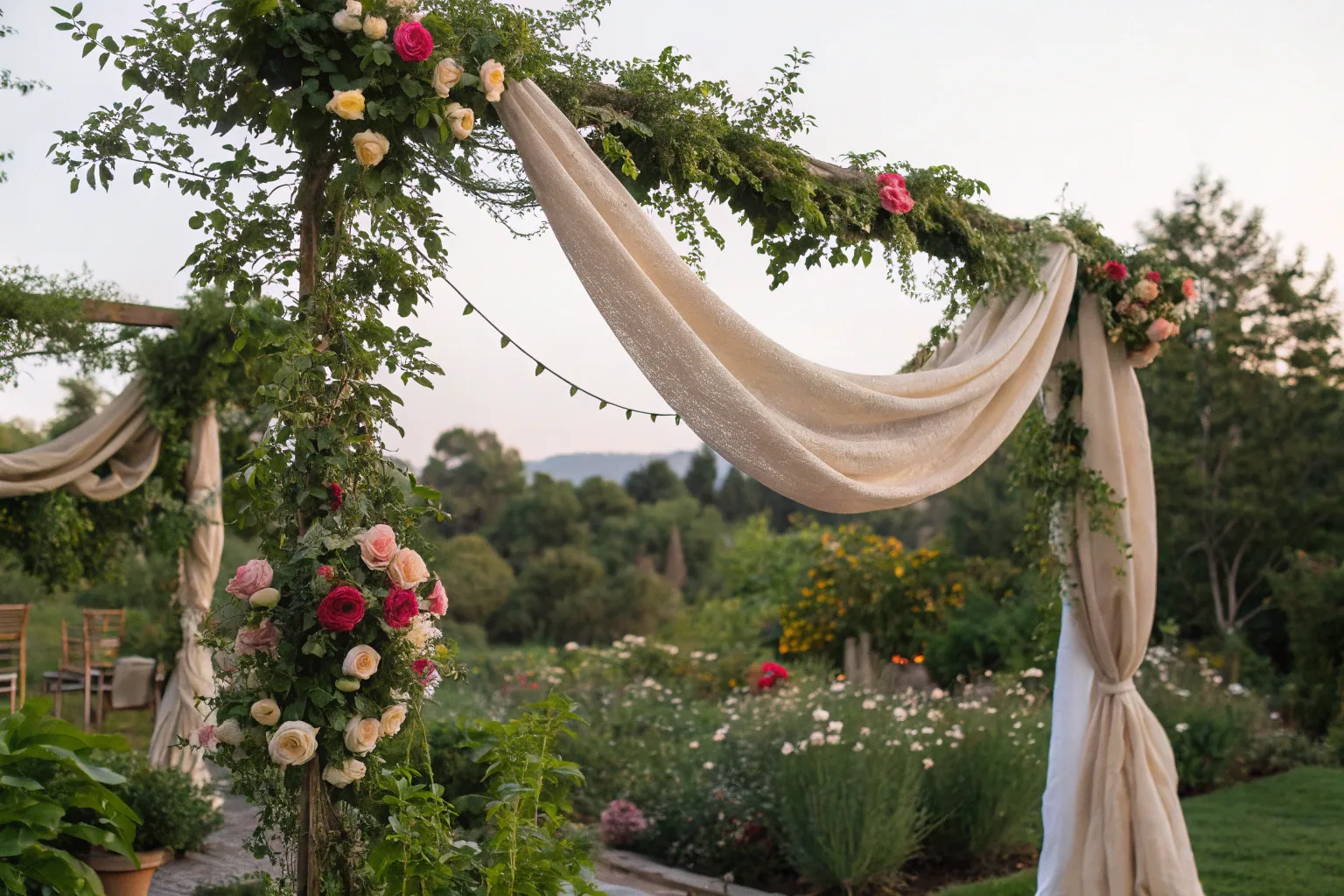Creating natural fabric garlands for outdoor spaces brings an understated elegance that store-bought decorations simply cannot match. These handcrafted pieces connect us to both nature and tradition, offering a sustainable way to beautify patios, gardens, and outdoor living areas with materials that age gracefully alongside the seasons.
The Timeless Appeal of Natural Fabric Outdoors

Natural fabric garlands possess an inherent quality that synthetic alternatives lack – they develop character through weathering, their colors mellowing into rich, muted tones that complement rather than compete with outdoor environments. I’ve found that the most successful outdoor garlands embrace this natural aging process, allowing the elements to become collaborators in the creative process.
When selecting materials for outdoor garlands, the weight and weave of the fabric plays a crucial role in determining longevity. Medium-weight cotton canvas and linen fabrics offer the ideal balance between durability and drape, while hemp and jute provide exceptional weather resistance with their natural fiber strength. These materials contain inherent tannins that help preserve the fibers and naturally resist moisture absorption.
Duck canvas in 10-12 oz weights performs exceptionally well in outdoor applications. Unlike lighter fabrics that quickly deteriorate under UV exposure and moisture cycles, duck canvas maintains structural integrity while developing a beautiful weathered patina. The tight weave prevents water penetration while allowing air circulation, essential for preventing mildew formation.
Understanding Natural Weather Resistance

The key to creating long-lasting outdoor fabric garlands lies in working with the natural properties of plant fibers rather than fighting against them. Natural linen contains lignin, a polymer that provides inherent weather resistance and UV protection. Hemp fibers strengthen when wet, making them ideal for climates with frequent rainfall. Cotton canvas develops increased tensile strength through controlled weathering, creating a more durable material over time.
Pre-treating natural fabrics with lanolin-based treatments enhances weather resistance without compromising breathability. This traditional method, used by sailors and outdoorsmen for centuries, creates an invisible barrier that repels water while allowing fabric to release moisture vapor. The treatment process involves warming pure lanolin and working it into the fabric fibers using gentle pressure and natural brush strokes.
Tannin-rich solutions from oak galls, tea, or coffee grounds can be applied as natural mordants to increase UV resistance and color fastness. These substances bond chemically with cellulose fibers, creating protective compounds that resist fading and fiber breakdown. The process mirrors traditional leather tanning, where tannins preserve organic materials against environmental degradation.
Color Selection and Natural Durability

Understanding which colors naturally resist fading helps create garlands that maintain their visual impact throughout seasons. Earth tones derived from natural dyes – ochres, umbers, and siennas – possess molecular structures that inherently resist UV breakdown. These pigments contain iron oxides and clay particles that create physical barriers against photodegradation.
Indigo-dyed fabrics demonstrate exceptional colorfastness due to the unique molecular structure of the indigo molecule, which becomes more stable when exposed to light and air. Similarly, madder root reds and turmeric yellows contain complex organic compounds that actually become more color-stable through controlled light exposure.
For those interested in creating naturally dyed sections, avocado pit and skin dyes produce beautiful rose and coral tones that age gracefully to soft pinks and creams. Black walnut hull dyes require no mordant and create rich browns that deepen with weathering. Elderberry dyes shift from purple to soft lavender tones, creating beautiful color variations along the garland length.
Essential Techniques for Outdoor Garlands

Creating Weather-Resistant Connections
The longevity of outdoor fabric garlands depends heavily on connection methods that withstand thermal expansion and contraction cycles. Natural jute cord provides the ideal base material – its hemp content naturally resists rot while maintaining flexibility through temperature changes. When tying fabric strips, use modified clove hitches that tighten under stress but allow controlled movement.
Spacing considerations become critical in outdoor applications. Fabric strips should be positioned with 1-2 inch intervals to promote air circulation and prevent moisture trapped between layers. This spacing also allows for natural movement that prevents stress concentration points during wind exposure.
The Foundation Strip Method
Cut fabric strips to 12-16 inches in length and 2-3 inches in width for optimal drape and wind resistance. Longer strips create beautiful movement but may tangle in moderate winds, while shorter strips lack the graceful flow that makes fabric garlands appealing. The width-to-length ratio of approximately 1:5 provides structural stability while maintaining elegant proportions.
Create strips by tearing rather than cutting when working with cotton or linen fabrics. Tearing follows the grain structure, creating naturally frayed edges that add texture while preventing straight-line stress points that can propagate tears. The slightly irregular edges also help fabric strips move independently, reducing tangling.
Assembly Techniques for Longevity
Begin assembly by preparing your base cord with loop ends created using natural fiber rope. These loops distribute hanging stress across multiple cord fibers rather than concentrating force at single attachment points. Space them 6-8 feet apart for standard patio installations, adjusting based on mounting points and desired drape.
Knot placement strategy determines both appearance and durability. Position fabric knots at irregular intervals – approximately every 8-12 inches with slight variations – to create visual rhythm while preventing mechanical stress concentration. Alternate fabric colors and textures in patterns that complement rather than compete with your outdoor environment.
Advanced Weather Protection Methods

Natural Fabric Treatments
Beeswax emulsion treatments provide excellent water repellency while maintaining fabric breathability. Create the emulsion by melting equal parts beeswax and coconut oil, then slowly incorporating warm water while whisking to create a stable mixture. Apply using natural bristle brushes, working in thin, even coats that penetrate fiber structure without surface buildup.
Pine resin treatments offer traditional weather protection used by indigenous peoples for centuries. Dissolve small amounts of pine resin in warm coconut oil to create a treatment that hardens fiber surfaces while maintaining flexibility. This method works particularly well with hemp and linen fabrics, where the resin bonds chemically with lignin compounds.
Maintenance and Seasonal Care
Outdoor fabric garlands benefit from quarterly maintenance cycles that address accumulated environmental stress. Remove garlands during severe weather events – not because they cannot withstand the conditions, but because violent movement against mounting points can cause premature wear.
Cleaning protocols for outdoor fabric garlands differ significantly from indoor maintenance. Use cold water rinses to remove surface contamination without thermal shock to weathered fibers. White vinegar solutions (1:10 ratio) effectively neutralize alkaline deposits from rain and irrigation systems while providing mild antifungal properties. Avoid mechanical washing, which can break down the weathered fiber structure that provides long-term durability.
Storage considerations during extreme weather involve loose rolling rather than tight folding. Store in breathable containers – canvas bags or perforated plastic bins – that allow air circulation while protecting from direct moisture contact. Cedar blocks or lavender sachets provide natural pest deterrence without chemical treatments that might interact with fabric treatments.
Design Integration with Outdoor Spaces
Complementing Garden Architecture
Natural fabric garlands serve as transitional elements that soften the harsh lines between built structures and organic garden spaces. When installing between posts or architectural features, consider the sight line relationships – garlands should enhance rather than obstruct views of garden focal points or distant landscapes.
Height variation strategies create visual interest while accommodating different viewing angles throughout your outdoor space. Install garlands at multiple levels – perhaps 7-8 feet for overhead interest and 4-5 feet for intimate seating area definition. This layered approach mimics natural forest canopy structures that feel inherently comfortable to human perception.
Seasonal Adaptation Strategies
Design garland installations that can be easily modified for seasonal changes without complete reconstruction. Removable accent sections allow incorporation of seasonal materials – pine boughs for winter, fresh herb bundles for summer – without disturbing the permanent fabric foundation.
Color progression planning considers how natural fabric colors will shift throughout their outdoor lifecycle. Begin with slightly more saturated tones than your target appearance, knowing that UV exposure and weather cycling will gradually mellow colors to desired final states. This approach requires patience but creates more authentic, integrated results than attempting to maintain initial appearance through frequent replacement.
Plan garland positioning to take advantage of seasonal light changes. Winter sun angles differ significantly from summer positioning, affecting both fabric appearance and longevity. Garlands that receive gentle morning light but avoid harsh afternoon exposure typically develop more even color changes and experience less fiber degradation.
Creating Lasting Beauty Through Natural Processes
The most successful outdoor fabric garlands embrace the Japanese concept of wabi-sabi – finding beauty in imperfection and impermanence. Rather than fighting natural aging processes, these installations celebrate the gradual transformation of materials as they interact with their environment.
Understanding this philosophical approach transforms maintenance from preservation to collaboration. We become partners with natural processes, guiding rather than controlling the evolution of our outdoor decorations. This perspective creates deeper satisfaction and connection with our outdoor spaces while reducing the anxiety often associated with maintaining “perfect” appearances.
The quiet beauty of well-designed natural fabric garlands lies not in their initial impact but in their graceful adaptation to changing seasons and conditions. They provide a constant yet ever-changing element that anchors outdoor spaces while celebrating the dynamic nature of outdoor living.
Through thoughtful material selection, appropriate installation techniques, and acceptance of natural aging processes, these garlands become integral elements of outdoor spaces that improve rather than deteriorate with time. They represent a sustainable approach to outdoor decoration that honors both craftsmanship traditions and environmental responsibility.

